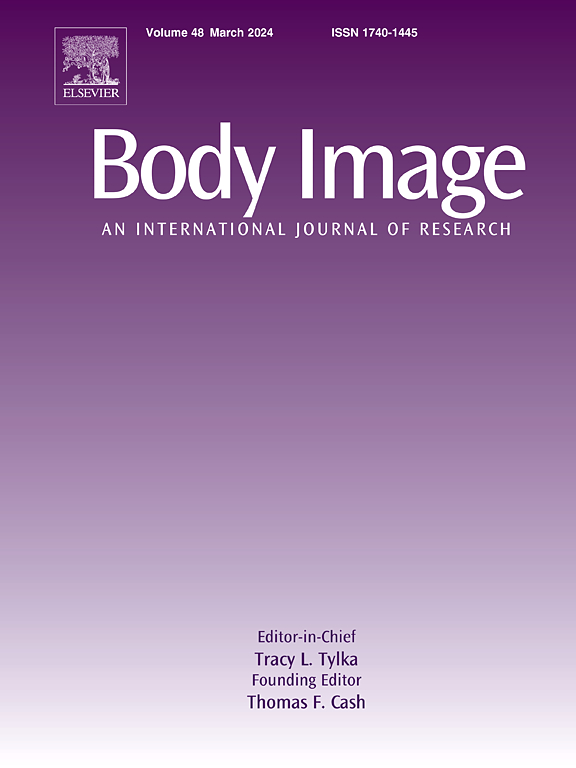“My body is amazing from the bottom to the top” - An RCT study testing two positive body image media micro-interventions for young children aged 4–6 years
IF 5.4
1区 心理学
Q1 PSYCHIATRY
引用次数: 0
Abstract
This study presents a fully powered RCT testing the effectiveness and acceptability of two positive body image online media-based micro-interventions designed for young children. A total of 439 children aged 4–6 years were randomised into one of four conditions: i) episode intervention, ii) episode control, iii) music video intervention, or iv) music video control. Children and their accompanying parent attended two data collection sessions, approximately a week apart. During session one, each child and accompanying parent watched their assigned media together on a tablet device. Children completed measures of body appreciation, functionality appreciation, and weight bias with a trained moderator in a play-based interview pre-intervention (T1), immediately post-intervention (T2) and approximately one-week later (T3) during session two. Accompanying parents completed brief acceptability questionnaires at both sessions. Results indicated that the music video intervention had a small protective effect over the matched control on body appreciation. No effects were found for the episode intervention. Children and their parent/guardian indicated that both interventions were equally acceptable to each other and when compared with their respective, matched active controls. Results showed some promise for the immediate protective impact of appearance inclusive children’s media that focuses on body appreciation and functionality appreciation.
"我的身体从下往上都很棒"--一项针对 4-6 岁幼儿的 RCT 研究,测试了两种积极的身体形象媒体微干预措施。
本研究提出了一项全功率的随机对照试验,测试了为幼儿设计的两种基于网络媒体的积极身体形象微干预的有效性和可接受性。共有439名4-6岁的儿童被随机分为四组:i)事件干预,ii)事件控制,iii)音乐视频干预,或iv)音乐视频控制。儿童及其陪同的父母参加了两次数据收集会议,大约相隔一周。在第一阶段,每个孩子和陪同的父母一起在平板电脑上观看他们指定的媒体。在干预前(T1)、干预后(T2)和大约一周后(T3)的第二阶段中,儿童在训练有素的主持人的游戏访谈中完成了身体欣赏、功能欣赏和体重偏差的测量。陪同的家长在两次会议上都完成了简短的可接受性问卷。结果表明,音乐视频干预对身体欣赏的保护作用较小。插曲干预未发现任何影响。儿童和他们的父母/监护人表示,两种干预措施彼此都同样可以接受,并且与各自的积极对照相匹配。结果显示,关注身体欣赏和功能欣赏的“外貌包容性”儿童媒体对儿童的直接保护作用具有一定的前景。
本文章由计算机程序翻译,如有差异,请以英文原文为准。
求助全文
约1分钟内获得全文
求助全文
来源期刊

Body Image
Multiple-
CiteScore
8.70
自引率
28.80%
发文量
174
期刊介绍:
Body Image is an international, peer-reviewed journal that publishes high-quality, scientific articles on body image and human physical appearance. Body Image is a multi-faceted concept that refers to persons perceptions and attitudes about their own body, particularly but not exclusively its appearance. The journal invites contributions from a broad range of disciplines-psychological science, other social and behavioral sciences, and medical and health sciences. The journal publishes original research articles, brief research reports, theoretical and review papers, and science-based practitioner reports of interest. Dissertation abstracts are also published online, and the journal gives an annual award for the best doctoral dissertation in this field.
 求助内容:
求助内容: 应助结果提醒方式:
应助结果提醒方式:


